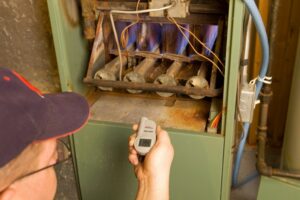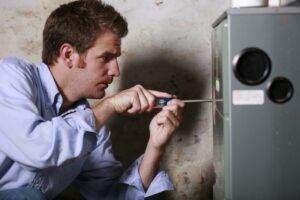If you’re like most people, you probably switch your thermostat to heat when your house gets below 64 degrees Fahrenheit. You probably set your heat to about 65 to 70 degrees. This is just enough to keep you and your family comfortable during the winter months.
But, what happens if something goes wrong with your furnace? Why would a furnace tripping the breaker be a problem?
The bad news is that furnaces can develop many different issues. The good news is that most of them are easily resolved.
Read on to learn what kind of furnace repair you might need right now.
Furnace Tripping the Breaker
There are two major reasons why the furnace might trip a breaker. Both indicate that there’s a problem with the electrical circuits in your home.
The first possible issue is the breaker itself. This could be because the breaker is old or faulty. It could also be that the breaker isn’t powerful enough to support the furnace.
The other possible issue is the furnace. It might be that the furnace needs more electricity than the breaker can handle. You might need either a smaller furnace or a stronger breaker.
Heating System Won’t Switch On
There are many reasons why a heating system wouldn’t turn on at all. The first, of course, is that the breaker tripped the last time the furnace turned on. This prevents electricity from getting to the furnace in the first place.
It could also be an issue of a short in a wire somewhere. This prevents enough electricity from getting to the furnace to turn it on.
Other issues might include faulty parts or an open service door to the furnace.
Low Airflow
Many internal issues cause a low airflow from your heating system. For this reason, it’s very common among heater issues. Causes range from simple issues like a closed vent to more complicated issues like a failing fan motor.
A closed vent is something you can check and fix yourself, so it’s, fortunately, the cheapest issue to fix.
Clogs in the vents also prevent air from flowing as well. This issue, however, usually requires professional help to resolve.
Your furnace repair professionals might also check the fan motor to make sure it’s not failing. If it isn’t spinning as fast as it should, you may need a new motor.
Your Furnace Blows Cool Air
Also among the common heating issues is when your HVAC blows cold air instead of hot. The good news is that this indicates that the airflow and fan motor are both fine. The bad news is that this means your furnace isn’t producing heat.
This is usually the result of faulty parts. A good example of this is the pilot light failing. The pilot light is responsible for creating the small flames that generate the heat in the furnace.
If this piece doesn’t work, then you get a furnace that only blows cool air instead of hot.
Burning Smell
This one may or may not be a major issue with your heating system. If you only notice this the first one or two times you turn your furnace on for the winter, then it’s probably alright. The furnace just has some dust in it from the winter.
However, if the smell seems very strong or persists after that, then you may need to have a look at your furnace. This could mean faulty parts or bad wiring. If these issues continue, they could result in an electrical fire.
It’s best to have these issues resolved quickly before that happens.
Short Cycling
Short cycling refers to when your furnace turns on only to turn back off quickly. This is bad for your furnace since it causes more wear on its parts. There are also many reasons why this might happen.
For example, if your thermostat is right under a vent, this can trick it into thinking that your house is warming up faster than it is. This causes it to turn the furnace off faster than it should.
It might also be because of faulty parts. Furnaces have built-in safety features to prevent gas leaks and electrical fires. These activate when a problem is detected with a part.
Detecting Carbon Monoxide
If you have a gas furnace, then you should have a carbon monoxide detector. Carbon monoxide is odorless and tasteless, so the human brain can’t detect it. However, it’s also deadly to those who have prolonged exposure to it.
Carbon monoxide is produced by your furnace but is supposed to be funneled out by a chimney. This releases the deadly gas into the air and away from human lungs instead of through your home for you to breathe in.
If your detector is going off frequently, you might have a clog in that chimney.
Noisy Heating System
This issue is a matter of trusting your instincts. You know what your heating system sounds like when it runs. That being said, there are many reasons why a furnace would suddenly become noisy.
For example, there may be a loose part inside of your furnace. When the fan blows, it shakes and rattles that loose part. This vibration travels through the vents and makes your heating system seem quite loud.
If this is the case, it’s best to get an expert out to fix the issue as soon as possible. These issues only get worse if they’re allowed to go on and soon you’ll be dealing with something more serious than a loose part.
Get Your Heating Issues Fixed Today
Whether you have a furnace tripping the breaker or some other issue, it’s always best to resolve it as soon as you can. This prevents the problem from getting worse and costs more to fix.
And the best place to get high-quality HVAC service is right here at Carolina Climate Control. We’re among the best in the business for both AC and heater repair.
Contact us today and see how we can keep you and your family comfortable this winter.
Continue Reading
Tags: furnace installation, furnace repair
Posted in Heating | Comments Off on Why Is My Furnace Tripping the Breaker? (And Other Common Heating Issue Questions Answered)



